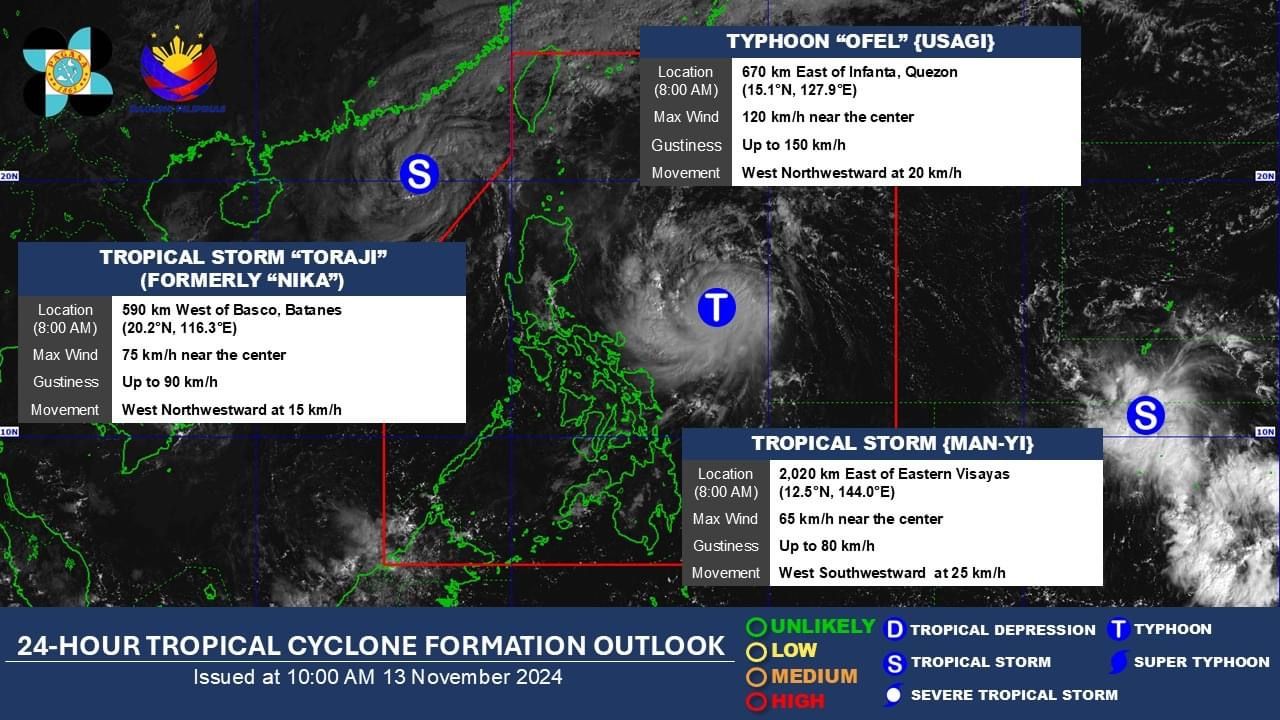Series of strong cyclones could be linked to climate change, climate expert says

The occurrence of six consecutive, powerful tropical cyclones—ranging from severe tropical storms to super typhoons—“could be indicative of climate change,” according to a climate expert from the Philippine Atmospheric, Geophysical and Astronomical Services Administration (PAGASA).
In a span of just one month, the Philippines experienced the back-to-back arrival of Severe Tropical Storm Kristine (Trami), Super Typhoon Leon (Kong-rey), Typhoon Marce (Yinxing), Typhoon Nika (Toraji), Super Typhoon Ofel (Usagi), and Typhoon Pepito (Man-yi).
The National Aeronautics and Space Administration (NASA) described the series of storms that simultaneously formed near the Philippines in November as “unusual.”
“We could say this is a signal of a changing climate,” said PAGASA-Climate and Agrometeorology Division Chief Thelma Cinco, in response to NASA’s statement during a press conference on Friday, Nov. 15.
She emphasized the rapid succession of powerful storms, with at least two reaching super typhoon strength.
Typhoon Pepito, which is currently heading towards the Philippines, is expected to become the third tropical cyclone in this series to intensify into a super typhoon.
Cinco explained that the higher-than-usual sea surface temperatures (SST) near the country’s waters are fueling the formation of stronger and successive tropical cyclones.
She noted that the SST in the Philippine Sea is reaching 30°C, while tropical cyclones typically form when ocean temperatures are 27°C or higher.
What is unusual, however, is that this warming of the waters near the country, which is usually associated with a La Niña event, is occurring without the full La Niña conditions. Currently, the SSTs over the Pacific Ocean are more consistent with a La Niña-like pattern.
Cinco said the warming trend is seen as an indication of the effects of climate change on tropical cyclone behavior, with warmer waters contributing to the development of more intense storms.
However, she emphasized that this is not the first time the country has experienced multiple storms in rapid succession.
She cited that in November 2020, the Philippines saw four successive tropical cyclones, namely Super Typhoon Rolly (Goni), Severe Tropical Storm Siony (Atsani), Tropical Storm Tonyo (Etau), and Typhoon Ulysses (Vamco).